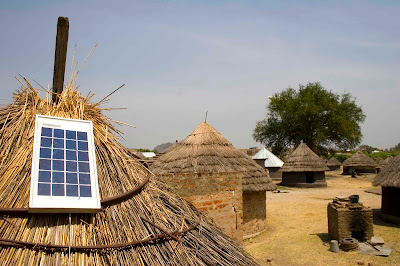For many people, the most recent insight into daily life in
Uganda has come from the voice of Jeremy Clarkson. In April 2013, the Azuri
team started a two-week trip to see what life was really like for our rural
customers in northern Uganda. Spoiler alert: It was nothing like the Top Gear
special.
Something that seemed odd about the Top Gear special was the
quality- and quantity- of the roads. After complaining about speed bumps, the
boys manage to find a length of road long and neat enough to film generic
car montage shots. Where they found that particular strip of untainted tarmac was a source of amazement to
our hosts.
As we drove further North from Kampala, road quality deteriorated
at an alarming rate. With each new stretch of road more pot-holed and dangerous
than the last, the reality of locals having to get hold of the means for
lighting “out in the bush” became a much more uncomfortable issue- literally.
Still, not as bad as rainy season, where guessing the depth of flooded potholes
becomes the motoring equivalent of Russian Roulette.
Rural customers face a serious dilemma. It’s not just the price of the kerosene
they’re using that contributes to their energy cost per week; it’s also getting
to the nearest petrol station to purchase it.
One Mama told us that she spends 1800 Ugandan Shillings a
week on kerosene, and 10,000 Ugandan Shillings on a boda-boda (motorbike taxi)
to take her there. Now Mama can spend less than half the cost on a weekly
top-up scratch card from the village Indigo Ambassador and receive her lighting
without wasting half a day travelling. She doesn’t have to leave the house to
charge her mobile phone, so it can stay on all day in case she gets a message
from her son in town. She’s very excited about charging her neighbour’s mobile
phones for a bit of extra cash, too.
In a year, Mama will have saved $140 US dollars on her
lighting alone. It’s enough for travel and accommodation for a three day
minibreak in Gulu, the nearest big town. Or 12 goats. Or savings for her
children to go to school.
Mama’s home electrification journey started with lighting
and mobile phone charging, but she’s got something bigger in her sights. The
day her Indigo unit can be used to power a television, Mama will be able to
watch shows in her own home, 20 miles away from the nearest national grid
connection. Wonder what she’ll think of that Top Gear Uganda special…
Pippa Bransfield-Garth
In-house blogger, Azuri


